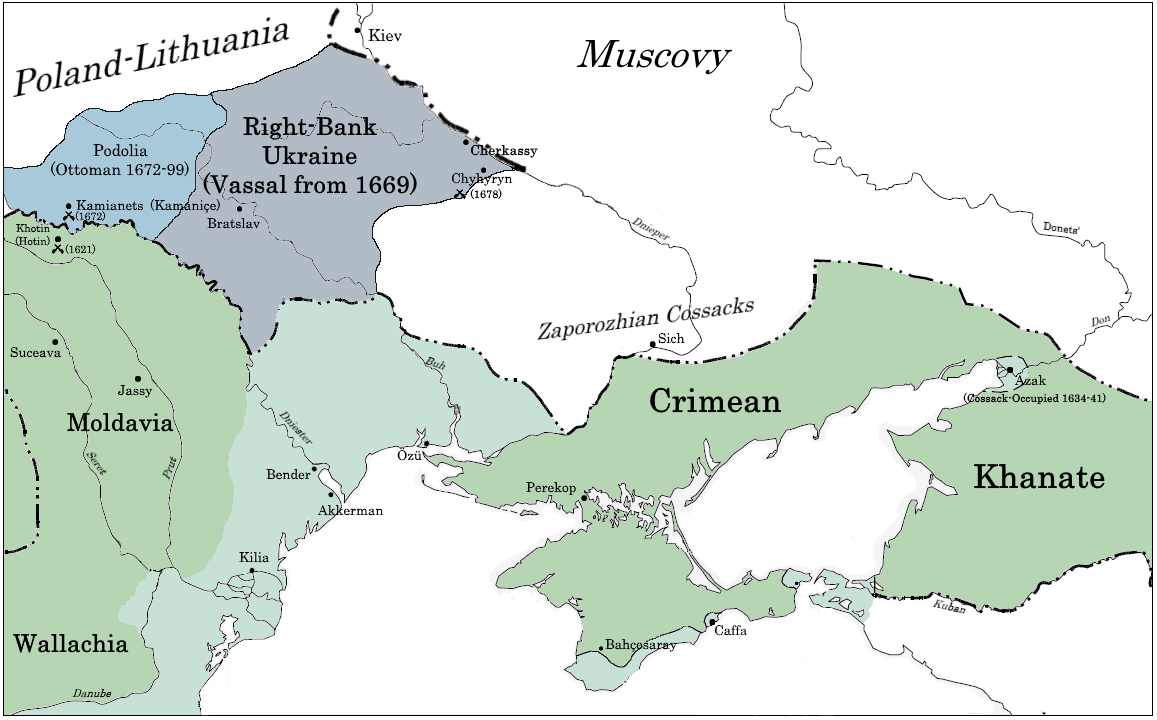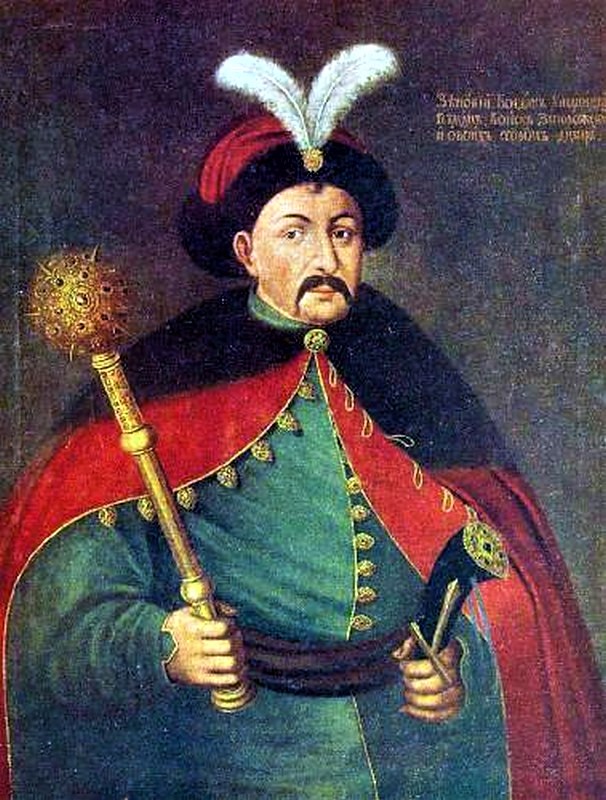|
Battle Of Loyew (1649)
The Battle of Loyew ( Belarusian: ''Бітва пад Лоевам,'' Ukrainian: ''Битва під Лоєвом,'' Polish: ''Bitwa pod Łojowem;'' 31 July 1649) was fought between the Zaporozhian Host against the Polish–Lithuanian Commonwealth as a part of the Khmelnytsky Uprising. Near the site of the present-day town of Loyew on the Sozh, Sozh River in Belarus, a forces of the Zaporozhian under the command of Colonels Mykhailo Krychevsky, Stepan Pobodailo and Martyn Nebaba was defeated by the Polish–Lithuanian Commonwealth’s forces under the command of Prince Janusz Radziwiłł and Nobleman Wincenty Korwin Gosiewski. Prince Janusz Radziwiłł was able to engage a forces of the Zaporozhian Cossacks before they merged. First, he defeated the army of the Zaporozhian Cossacks under the command of Colonel Mykhailo Krychevsky, who was killed in the battle; then he defeated the rest armies of the Zaporozhian Cossacks under the command of the other Colonels Stepan Pob ... [...More Info...] [...Related Items...] OR: [Wikipedia] [Google] [Baidu] |
Khmelnytsky Uprising
The Khmelnytsky Uprising, also known as the Cossack–Polish War, Khmelnytsky insurrection, or the National Liberation War, was a Cossack uprisings, Cossack rebellion that took place between 1648 and 1657 in the eastern territories of the Polish–Lithuanian Commonwealth, which led to the creation of a Cossack Hetmanate in Ukraine. Under the command of hetman Bohdan Khmelnytsky, the Zaporozhian Cossacks, allied with the Crimean Tatars and local Ukrainian peasantry, fought against Crown Army, Commonwealth's forces. The insurgency was accompanied by Batoh massacre, mass atrocities committed by Cossacks against prisoners of war and the civilian population, especially Polish people, Poles, Jews and Catholic Church, Roman Catholic and Ruthenian Uniate Church, Ruthenian Uniate clergy, as well as savage reprisals by loyalist Jeremi Wiśniowiecki, the ''voivode'' of Ruthenians, Ruthenian descent (military governor) of the Ruthenian Voivodeship. The uprising has a symbolic meaning in th ... [...More Info...] [...Related Items...] OR: [Wikipedia] [Google] [Baidu] |
Crown Army
The Crown Army (Polish language, Polish: ''Armia koronna'') was the Ground warfare, land Military branch, service branch of the Military of the Polish–Lithuanian Commonwealth, military forces of the Crown of the Kingdom of Poland in the Polish–Lithuanian Commonwealth. It existed from the establishment of the federation in 1569 until the Third Partition of Poland in 1795.Bronisław Gembarzewski: ''Rodowody pułków polskich i oddziałów równorzędnych od r. 1717 do r. 1831''. References Bibliography *Mariusz Machynia, Czesław Srzednicki: ''Oficerowie Rzeczypospolitej Obojga Narodów 1717-1794'', vol.1 1: ''Oficerowie wojska koronnego'', part 1: ''Sztaby i kawaleria''. Kraków: Księgarnia Akademicka. Wydawnictwo Naukowe, 2002. ISBN 83-71-88-500-8. * Military history of the Polish–Lithuanian Commonwealth Disbanded armies Military units and formations established in 1569 Military units and formations disestablished in 1795 1569 establishments in the Polish–Lithu ... [...More Info...] [...Related Items...] OR: [Wikipedia] [Google] [Baidu] |
Right-bank Ukraine
The Right-bank Ukraine is a historical and territorial name for a part of modern Ukraine on the right (west) bank of the Dnieper River, corresponding to the modern-day oblasts of Vinnytsia, Zhytomyr, Kirovohrad, as well as the western parts of Kyiv and Cherkasy. It was separated from the left bank during the Ruin. Right-bank Ukraine is bordered by the historical regions of Volhynia and Podolia to the west, Moldavia to the southwest, Yedisan and Zaporizhzhia to the south, left-bank Ukraine to the east, and Polesia to the north. Main cities of the region include Cherkasy, Kropyvnytskyi, Bila Tserkva, Zhytomyr and Oleksandriia. History Since the Middle Ages, the region formed part of the Khazar Khanate, Kievan Rus', Mongol Empire, Golden Horde, Grand Duchy of Lithuania and the Kingdom of Poland. Right-bank Ukraine was the target of slave raids by Tatars from the Black Sea steppes. The history of right- and left-bank Ukraine is closely associated with the Khmelnyt ... [...More Info...] [...Related Items...] OR: [Wikipedia] [Google] [Baidu] |
Siege Of Zbarazh
The siege of Zbarazh ( Ukrainian: ''Облога Збаража, Битва під Збаражем,'' Polish: ''Oblężenie Zbaraża, Bitwa pod Zbarażem;'' 10 July — 22 August, 1649) was fought near the site of the present-day city of Zbarazh in Ukraine between the Cossack Hetmanate and Crimean Khanate against the Polish–Lithuanian Commonwealth as a part of the Khmelnytsky Uprising. The siege lasted for seven weeks.ЗБАРАЗЬКА БИТВА 1649 РОКУ. ДО ПИТАННЯ ІСТОРИЧНОЇ ОЦІНКИ В ... [...More Info...] [...Related Items...] OR: [Wikipedia] [Google] [Baidu] |
Bohdan Khmelnytsky
Zynoviy Bohdan Mykhailovych Khmelnytsky of the Abdank coat of arms (Ruthenian language, Ruthenian: Ѕѣнові Богданъ Хмелнiцкiи; modern , Polish language, Polish: ; 15956 August 1657) was a Ruthenian nobility, Ruthenian nobleman and military commander of Cossacks#Zaporozhian Cossacks, Zaporozhian Cossacks as Hetman of Zaporizhian Host, Hetman of the Zaporozhian Host, which was then under the suzerainty of the Polish–Lithuanian Commonwealth. He Khmelnytsky Uprising, led an uprising against the Commonwealth and its magnates (1648–1654) that resulted in the creation of an independent Cossack Hetmanate, Cossack state in Ukraine. In 1654, he concluded the Treaty of Pereiaslav with the Russian Tsar and allied the Cossack Hetmanate with Tsardom of Russia, thus placing central Ukraine under Russian protection. Khmelnytsky was compared to his contemporary, Oliver Cromwell. During the uprising, the Cossacks under his leadership massacred tens of thousands of Poles an ... [...More Info...] [...Related Items...] OR: [Wikipedia] [Google] [Baidu] |
Hetman Of The Zaporizhian Host
The Hetman of the Zaporozhian Host (, ) was the head of state of the Cossack Hetmanate. The office was abolished by the Russian government in 1764. Brief history The position was established by Bohdan Khmelnytsky during the Cossack Hetmanate in the mid 17th century. During that period the office was electoral. All elections, except for the first one, took place in the Senior Council in Chyhyryn which, until 1669, served as the capital of the Hetmanate. After the Pereiaslav Agreement of 1654, several senior cossacks sided with the Tsardom of Russia and, in 1663, they convened the Black Council of 1663 in Nizhyn which elected Ivan Briukhovetsky as an alternative hetman. Since the defeat of Petro Doroshenko in 1669, the title hetman was adapted by pro-Russian elected hetmans who resided in Baturyn. In the course of the Great Northern War one of them, Ivan Mazepa, decided to revolt against Russian rule in 1708, which later drew terrible consequences for the Cossack Hetmanate as well ... [...More Info...] [...Related Items...] OR: [Wikipedia] [Google] [Baidu] |
Artillery
Artillery consists of ranged weapons that launch Ammunition, munitions far beyond the range and power of infantry firearms. Early artillery development focused on the ability to breach defensive walls and fortifications during sieges, and led to heavy, fairly immobile siege engines. As technology improved, lighter, more mobile field artillery cannons were developed for battlefield use. This development continues today; modern self-propelled artillery vehicles are highly mobile weapons of great versatility generally providing the largest share of an army's total firepower. Originally, the word "artillery" referred to any group of soldiers primarily armed with some form of manufactured weapon or armour. Since the introduction of gunpowder and cannon, "artillery" has largely meant cannon, and in contemporary usage, usually refers to Shell (projectile), shell-firing Field gun, guns, howitzers, and Mortar (weapon), mortars (collectively called ''barrel artillery'', ''cannon artil ... [...More Info...] [...Related Items...] OR: [Wikipedia] [Google] [Baidu] |
Cavalry
Historically, cavalry (from the French word ''cavalerie'', itself derived from ''cheval'' meaning "horse") are groups of soldiers or warriors who Horses in warfare, fight mounted on horseback. Until the 20th century, cavalry were the most mobile of the combat arms, operating as light cavalry in the roles of reconnaissance, Screening (tactical), screening, and skirmisher, skirmishing, or as heavy cavalry for decisive economy of force and shock attacks. An individual soldier in the cavalry is known by a number of designations depending on era and tactics, such as a cavalryman, Equestrianism, horseman, trooper (rank), trooper, cataphract, knight, Drabant Corps of Charles XII, drabant, hussar, uhlan, mamluk, cuirassier, lancer, dragoon, samurai or horse archer. The designation of ''cavalry'' was not usually given to any Military animal, military forces that used other animals or platforms for mounts, such as chariots, Camel cavalry, camels or War elephant, elephants. Infantry who m ... [...More Info...] [...Related Items...] OR: [Wikipedia] [Google] [Baidu] |
Infantry
Infantry, or infantryman are a type of soldier who specialize in ground combat, typically fighting dismounted. Historically the term was used to describe foot soldiers, i.e. those who march and fight on foot. In modern usage, the term broadly encompasses a wide variety of subspecialties, including light infantry, irregular infantry, heavy infantry, mountain infantry, motorized infantry, mechanized infantry, Airborne forces, airborne infantry, Air assault, air assault infantry, and Marines, naval infantry. Other subtypes of infantry, such as line infantry and mounted infantry, were once commonplace but fell out of favor in the 1800s with the invention of more accurate and powerful weapons. Etymology and terminology In English, use of the term ''infantry'' began about the 1570s, describing soldiers who march and fight on foot. The word derives from Middle French , from older Italian (also Spanish) ''infanteria'' (foot soldiers too inexperienced for cavalry), from Latin '' ... [...More Info...] [...Related Items...] OR: [Wikipedia] [Google] [Baidu] |
Polish Hussars
The Polish hussars (; ), alternatively known as the winged hussars, were an elite heavy cavalry formation active in Crown of the Kingdom of Poland, Poland and in the Polish–Lithuanian Commonwealth from 1503 to 1702. Their epithet is derived from large rear wings, which were intended to demoralize the enemy during a Charge (warfare), charge. The hussars ranked as the elite of Polish cavalry until their official disbanding in 1776. The hussar dress was ostentatious and comprised plated Body armor, body armour (cuirass, spaulders, bevors, and bracer, arm bracers) adorned by gold ornaments, a burgonet or lobster-tailed pot helmet and jackboots as well as versatile weaponry such as lances, koncerz, long thrusting swords, szabla, sabres, pistols, carbines, Mace (bludgeon), maces, hatchets, war hammers, and horseman's picks. It was customary to maintain a red-and-white colour scheme, and to be girded with tanned animal hide. The wings were traditionally assembled from the feathers of ... [...More Info...] [...Related Items...] OR: [Wikipedia] [Google] [Baidu] |
Nobility
Nobility is a social class found in many societies that have an aristocracy. It is normally appointed by and ranked immediately below royalty. Nobility has often been an estate of the realm with many exclusive functions and characteristics. The characteristics associated with nobility may constitute substantial advantages over or relative to non-nobles or simply formal functions (e.g., precedence), and vary by country and by era. Membership in the nobility, including rights and responsibilities, is typically hereditary and patrilineal. Membership in the nobility has historically been granted by a monarch or government, and acquisition of sufficient power, wealth, ownerships, or royal favour has occasionally enabled commoners to ascend into the nobility. There are often a variety of ranks within the noble class. Legal recognition of nobility has been much more common in monarchies, but nobility also existed in such regimes as the Dutch Republic (1581–1795), the Republic ... [...More Info...] [...Related Items...] OR: [Wikipedia] [Google] [Baidu] |
Prince
A prince is a male ruler (ranked below a king, grand prince, and grand duke) or a male member of a monarch's or former monarch's family. ''Prince'' is also a title of nobility (often highest), often hereditary, in some European states. The female equivalent is a princess. The English word derives, via the French word ''prince'', from the Latin noun , from (first) and (head), meaning "the first, foremost, the chief, most distinguished, noble ruler, prince". In a related sense, now not commonly used, all more or less sovereign rulers over a state, including kings, were "princes" in the language of international politics. They normally had another title, for example king or duke. Many of these were Princes of the Holy Roman Empire. Historical background The Latin word (older Latin *prīsmo-kaps, ), became the usual title of the informal leader of the Roman senate some centuries before the transition to empire, the '' princeps senatus''. Emperor Augustus establishe ... [...More Info...] [...Related Items...] OR: [Wikipedia] [Google] [Baidu] |





